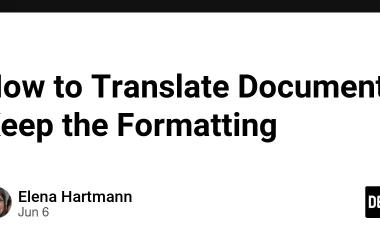If you work with digital commerce or control enterprise data, you’ve probably heard of PIM (Product Information Management) and MDM (Master Data Management).
Though both are essential for ensuring that information is precise, consistent, and easy to access in an organization, there are some acute differences that are vital to know in order to make the most of them.
Defining PIM and MDM
Product information management is a program that centralizes all product-related information and helps it share across different channels, such as online stores, marketplaces, and physical shops.
Master data management is a broader system that handles all important records within an organization. This includes product data but also covers customer details, supplier statistics, and other key business information.
Understanding the Purpose of PIM
PIM solutions help businesses achieve several goals. First of all, they store all the information about the items in one place.
This means everyone in the company, like marketing, sales, and customer service teams, can access the same up-to-date information and avoid mistakes when data is kept in different places.
Second, PIM solutions make sure that all records, including descriptions, specifications, prices, and images, are complete and correct everywhere, which leads to better marketing.
Third, PIM programs make it easy to distribute product data and let customers get the same information no matter where they shop.
Precise and detailed item information helps customers make better purchasing decisions, increasing satisfaction and loyalty.
Exploring the Purpose of MDM
Master data management guarantees that an organization’s key records remain the same within all departments.
It centralizes and normalizes essential information, reduces errors and duplicates, and helps make better decisions.
On top of that, MDM helps different departments share and integrate data, providing a clear view of important business details like customers and goods.
Key Differences Between PIM and MDM
PIM and MDM software both govern data, but they cover different types of information. Here are the main differences:
Scope of Data
- PIM focuses specifically on item data, such as descriptions, specifications, prices, images, and other details needed for marketing and selling.
- MDM covers all kinds of critical business data, including product information, customer details, supplier information, employee records, and financial stats.
Who Uses It
- PIM is mainly used by marketing, sales, and ecommerce teams. They use it to keep item information updated and consistent across various platforms.
- MDM is used by a broader range of people, including IT staff, managers, business analysts, and executives. They need accurate master data for analytics, reporting, and decision-making.
Data Management Focus
- PIM focuses on improving product data, making it detailed and appealing for customers. It includes tools for managing images, descriptions, and categories.
- MDM concentrates on data governance and integration and includes tools for cleaning, normalizing, approving, and synchronizing it.
Integration with Other Systems
- PIM integrates with ecommerce platforms, digital asset management software, CMS, and marketing tools.
- MDM integrates with a wide range of enterprise applications like Enterprise Resource Planning, CRM, Supply Chain Management, and Business Intelligence tools.
Integration and Relationship between PIM and MDM
In reality, PIM and MDM solutions are complementary rather than competing. When we integrate PIM and MDM, we’re basically connecting the dots between product data and other important information.
This helps ensure that everything stays the same across the board, from how goods are described to who buys them and how they’re delivered.
By joining these systems, companies can track where data comes from and how it’s related, ensuring it’s correct and trustworthy. It also makes it easier to handle new offerings and how they fit into the overall business plan.
Overall, combining PIM and MDM helps businesses keep their information straight, ensuring they can offer customers the right items at the right time and in the right way.
Benefits of Implementing PIM and MDM
Implementing PIM and MDM brings several important advantages. Firstly, correct information within the company helps build customer trust because they can rely on precise information.
Secondly, using PIM and MDM improves business operations by arranging all goods and related data in one central place, which saves time and speeds up new launches.
Thirdly, it helps the company control data by setting clear rules about who owns the records and how they should be kept. This reduces risks and guarantees that the company follows all the necessary rules and regulations.
Challenges and Considerations
Despite all the perks, implementing PIM and MDM comes with its share of challenges and things to think about.
First off, there might be problems with the quality of the data, like mistakes or missing info, which can mess up the whole system.
Then, connecting different data sources and applications can be tough and needs careful planning.
It’s also important to ensure the data follows rules and laws, like GDPR, to avoid trouble. As the business grows, the PIM and MDM solutions should be able to keep up without causing issues.
Plus, everyone who uses these apps needs to know how to use them correctly, so training is key.
Lastly, keeping everything running properly and fixing any problems that pop up is an ongoing job. Handling these challenges from the start is essential for making sure PIM and MDM work well in the long run.
Future Trends
Looking ahead, there are some big trends shaping the future of product information and master data management.
First, we can expect more companies to use AI and machine learning to help organize and improve their records automatically.
Second, it’s the widespread adoption of cloud-based solutions because they’re flexible, cost less, and don’t require buying new equipment.
Third, as more devices are connected to the Internet, there will be a lot more details to handle, and companies will have to work hard to find ways to manage them from different devices.
Lastly, companies will focus on controlling data at all the places they sell things, like online and in stores. They will want to ensure that customers get the same information and experience no matter where they find them.
Conclusion
PIM and MDM are critical components of an organization’s data management strategy.
While they serve different purposes, their integration can significantly improve data quality, operational productivity, and customer satisfaction.
By understanding their functions, benefits, and challenges and keeping an eye on future trends, organizations can maximize the benefits of these systems and outperform their competitors.
If you’re on the lookout for custom software services to level up your data management, hit us up! Our team specializes in crafting personalized PIM and MDM solutions that fit like a glove for your unique needs.
The post Comprehensive Guide to PIM and MDM appeared first on SCAND.







